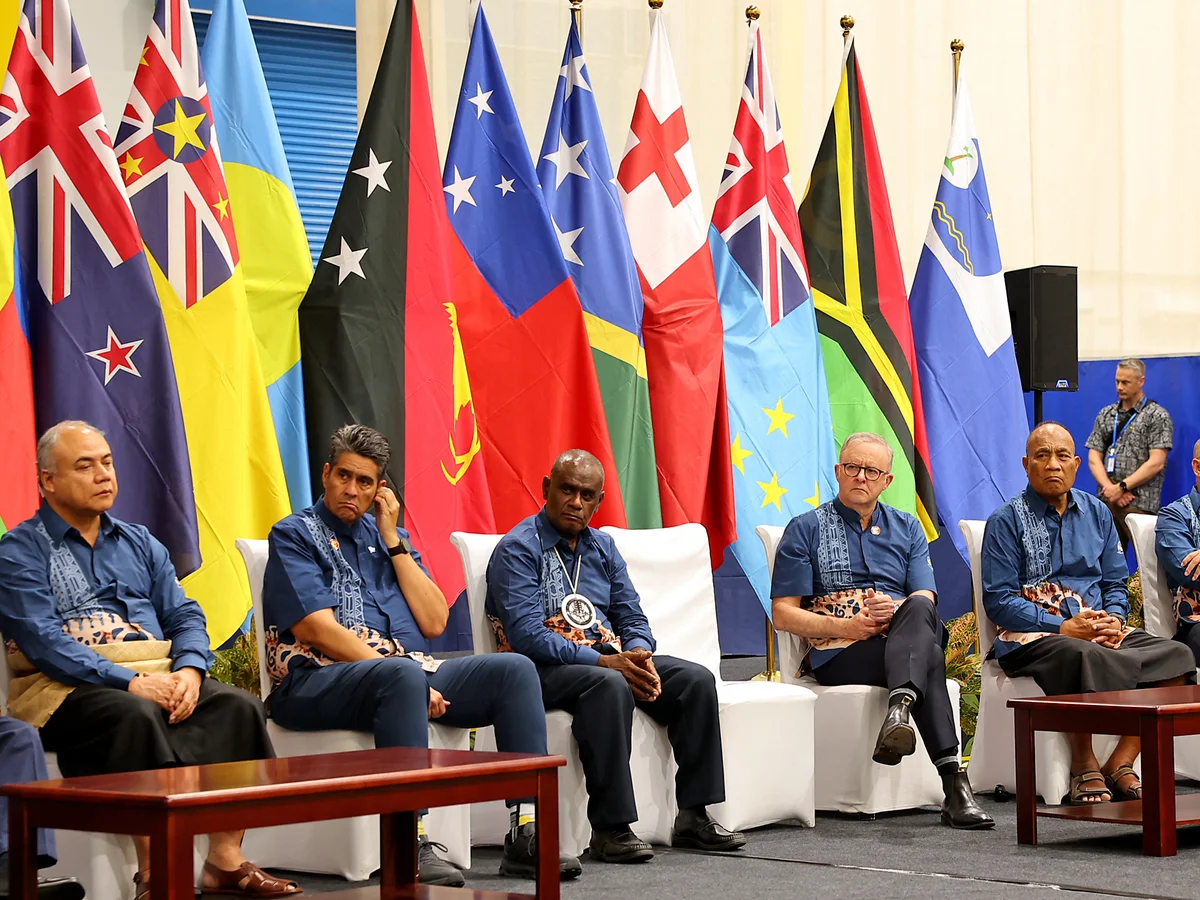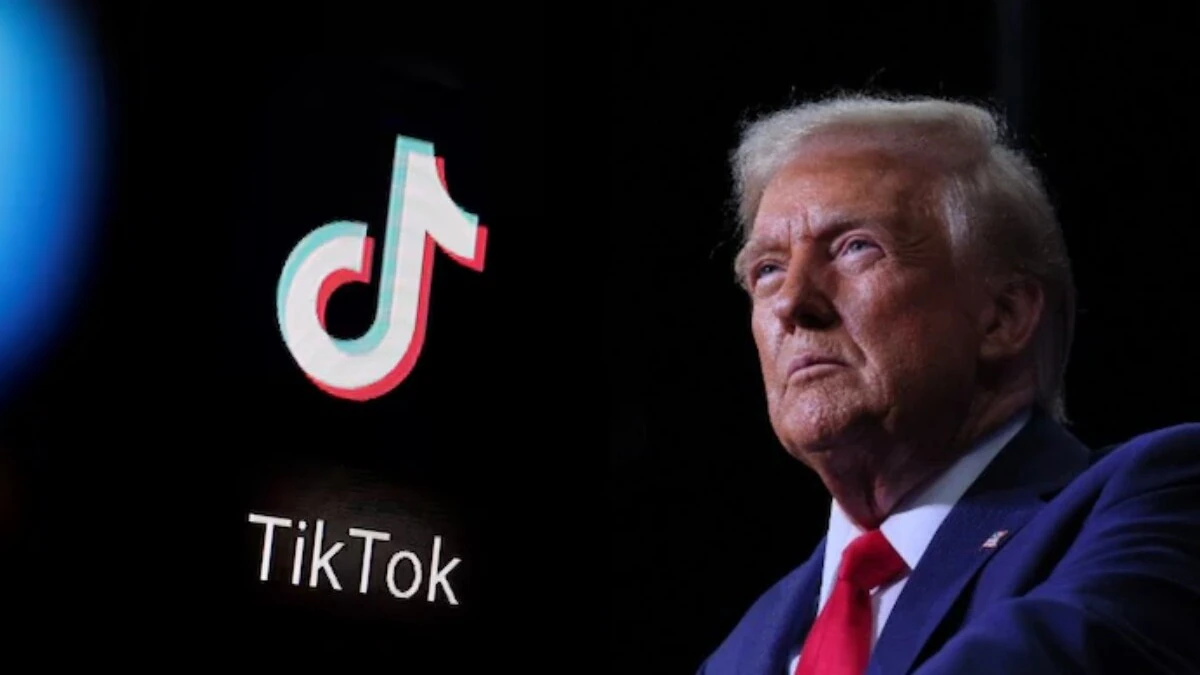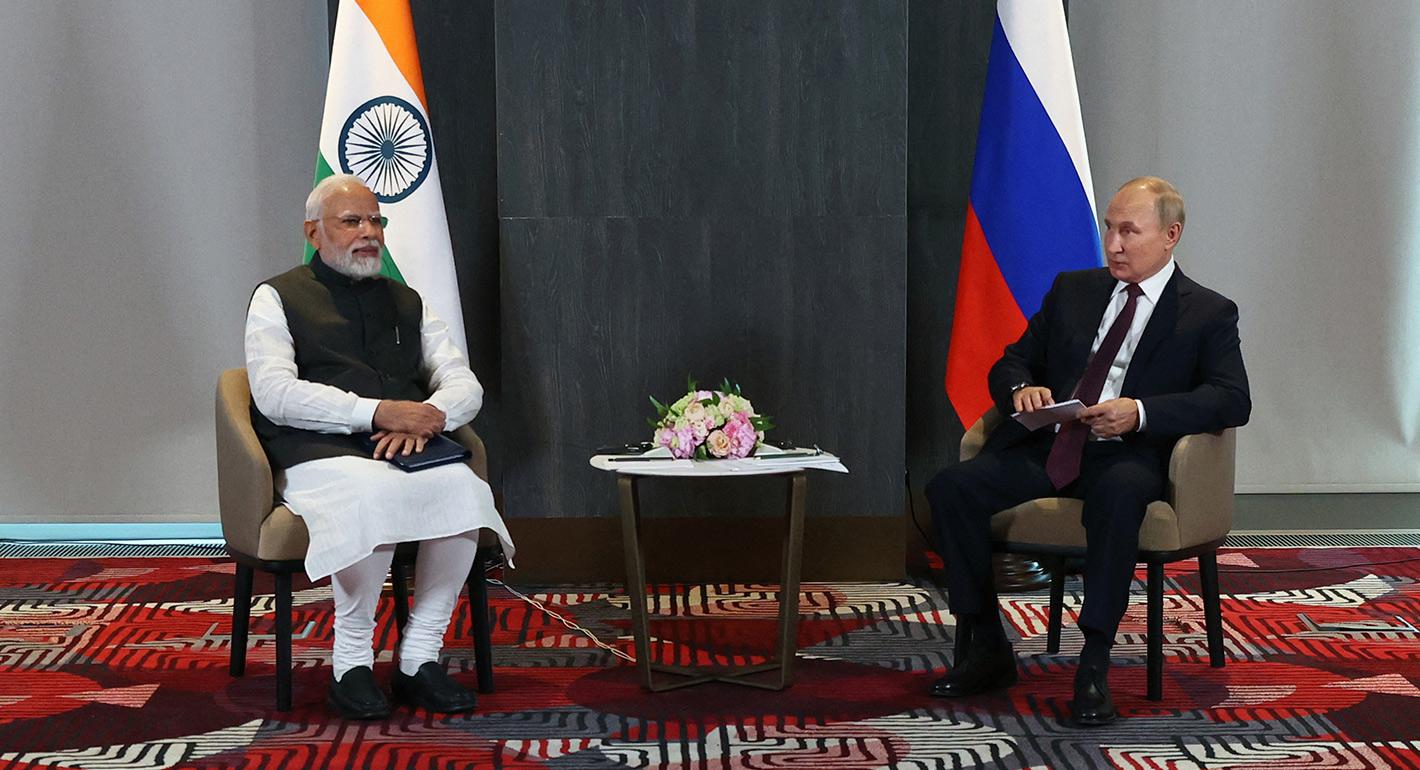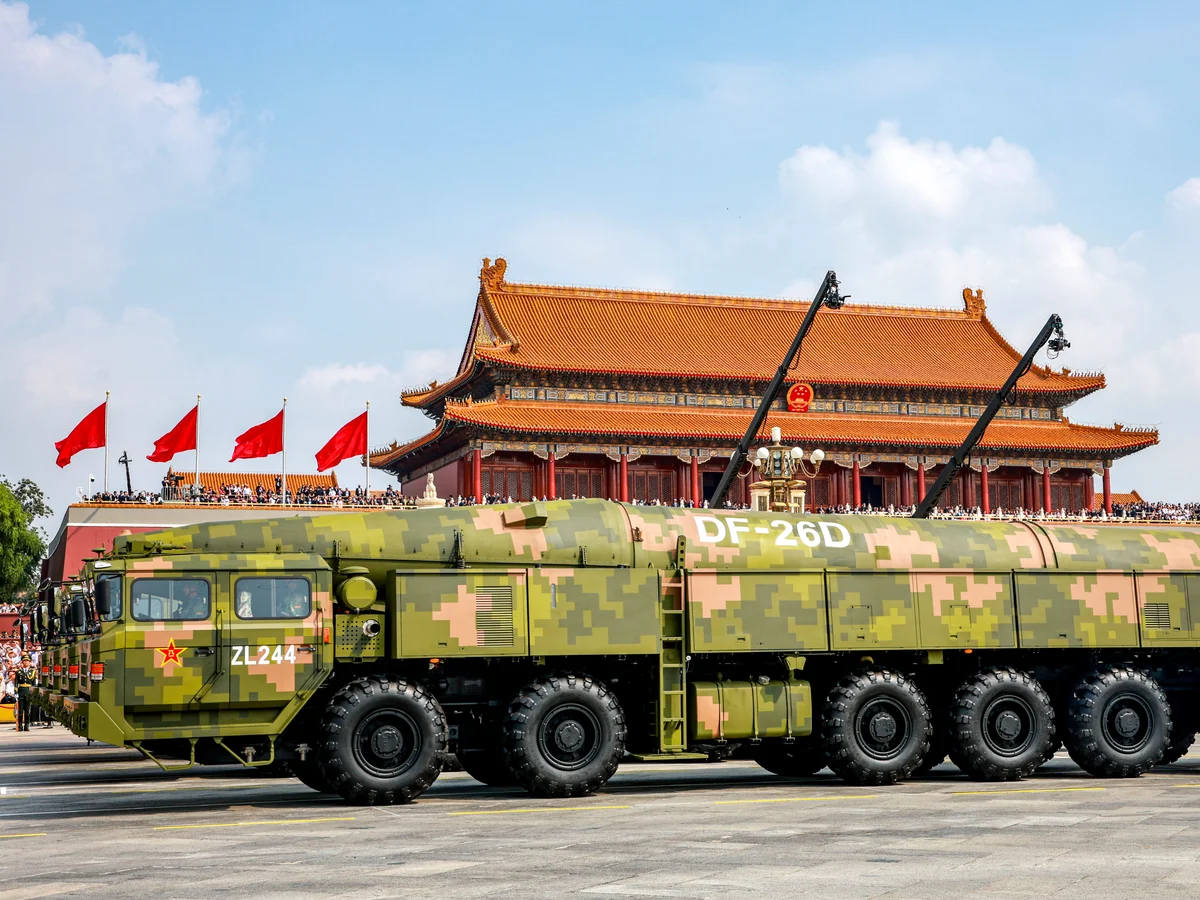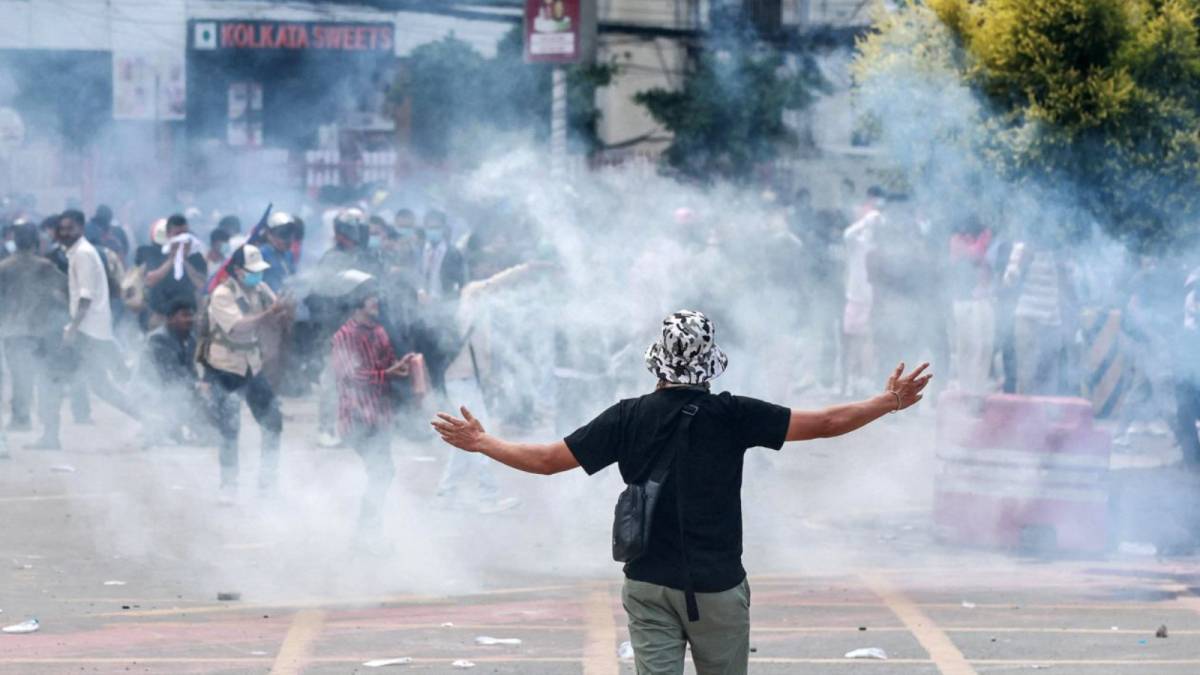In September 2025, the Pacific Islands Forum (PIF) convened in Honiara, Solomon Islands, bringing together leaders from 18 member nations, including Australia and New Zealand, to tackle pressing regional issues. Climate change, China’s growing influence, and Australia’s bid to co-host COP31 dominated discussions, set against a backdrop of geopolitical tensions and environmental urgency. This article explores five key takeaways from the summit, weaving a narrative of a region fighting for survival while navigating global power plays. Drawing on firsthand accounts and expert insights, we’ll unpack the stakes for Pacific nations and their partners.
Takeaway 1: Climate Crisis Remains the Pacific’s Top Priority
For Pacific Island nations, climate change isn’t a future threat—it’s a present crisis eroding coastlines and livelihoods. Leaders at the PIF reaffirmed climate change as the region’s “single greatest threat,” with rising sea levels, cyclones, and coral bleaching threatening communities. The summit’s focus on climate action underscored the urgency of global cooperation, especially with major emitters like China and Australia.
The Existential Threat of Rising Seas
I recall visiting a coastal village in Fiji years ago, where elders spoke of homes swallowed by the tide. Today, entire communities in places like Tuvalu face relocation as seas rise 1.5 times faster than the global average. The PIF’s call for a 1.5°C-aligned global response reflects a desperate plea for survival, not just rhetoric.
Pacific Resilience Facility: A Game-Changer?
The PIF advanced the Pacific Resilience Facility (PRF), a Pacific-led fund to support climate adaptation and disaster recovery. With pledges of $137 million, including $100 million from Australia, the PRF aims to reach $1.5 billion to ensure a “1.5-degree world.” This fund empowers Pacific nations to control their climate response, bypassing bureaucratic global schemes.
Takeaway 2: Australia’s COP31 Bid Gains Traction, but Faces Scrutiny
Australia’s bid to co-host COP31 in 2026 with Pacific nations was a major summit highlight, with leaders endorsing Adelaide as the host city. However, criticism of Australia’s fossil fuel exports, particularly its North West Shelf gas project, sparked debate. Pacific leaders urged Australia to align its actions with its climate rhetoric.
Why COP31 Matters to the Pacific
Hosting COP31 offers Pacific nations a global stage to amplify their climate struggles. Palau’s President Surangel Whipps Jr. called it a “major international opportunity” to showcase the region’s leadership. Yet, Vanuatu’s climate minister, Ralph Regenvanu, warned that Australia’s gas expansion could breach international climate rulings.
Balancing Economic Interests and Climate Goals
Australia’s Prime Minister Anthony Albanese defended his nation’s fossil fuel reliance, stating economies can’t “flick a switch” overnight. This pragmatic stance clashed with Pacific demands for a rapid phase-out, highlighting tensions between economic realities and environmental imperatives. The summit revealed Australia’s delicate balancing act as a regional leader.
Comparing Australia’s Climate Commitments
| Country | COP31 Bid Status | Climate Commitment | Criticism |
|---|---|---|---|
| Australia | Co-host with Pacific | $100M to PRF, net-zero by 2050 | Fossil fuel exports |
| Turkey | Competing bid | Limited Pacific engagement | Less regional relevance |
| Pacific Nations | Co-host support | 1.5°C advocacy, PRF leadership | Limited resources |
This table shows Australia’s strategic advantage in the COP31 bid, tempered by environmental critiques.
Takeaway 3: China’s Growing Influence Sparks Debate
China’s role in the Pacific loomed large, with its exclusion from the summit fueling speculation. Solomon Islands’ decision to bar external partners, likely under Chinese pressure to exclude Taiwan, highlighted Beijing’s regional clout. Earlier in 2025, China’s foreign ministers’ meeting with 11 Pacific nations solidified its climate and security pledges.
China’s Climate Commitments
At its May 2025 summit, China pledged $2 million for 100 “small and beautiful” climate projects, focusing on clean energy and disaster resilience. Foreign Minister Wang Yi positioned China as a reliable partner, contrasting with U.S. withdrawal from the Paris Agreement. These moves aim to win hearts and minds in a climate-vulnerable region.
The Taiwan Controversy
China’s push to exclude Taiwan from the PIF, despite its status as a development partner, stirred tensions. Pacific leaders rejected Beijing’s demands, reaffirming a 1992 agreement allowing Taiwan’s participation. This resistance underscores the region’s desire to maintain autonomy amid great power rivalry.
Takeaway 4: Geopolitical Tensions Shape Regional Unity
The PIF’s “Ocean of Peace” declaration, proposed by Fiji’s Prime Minister Sitiveni Rabuka, aimed to shield the Pacific from militarization and great power conflicts. Leaders emphasized sovereignty, rejecting the region as a “theatre” for U.S.-China rivalry. Yet, China’s policing initiatives in the Solomon Islands raised eyebrows.
The Solomon Islands’ Policing Pilot
A Chinese-led “Fengqiao experience” policing program in the Solomon Islands, involving village surveillance and data collection, alarmed some leaders. Australia countered with its Pacific Policing Initiative, offering $400 million for training hubs. This tug-of-war reflects competing visions for regional security.
A Personal Reflection on Pacific Unity
Growing up near the ocean, I’ve always felt a kinship with island nations whose lives revolve around the sea. The PIF’s push for an “Ocean of Peace” resonates deeply—it’s a reminder that these nations want to chart their own course, not be pawns in a global chess game. The summit’s unity feels like a quiet rebellion against external pressures.
Pros and Cons of the Ocean of Peace Declaration
Pros:
- Promotes regional sovereignty and peace.
- Rejects militarization, prioritizing local needs.
- Strengthens Pacific identity on the global stage.
Cons:
- Lacks enforcement mechanisms.
- Faces challenges from external powers’ influence.
- May struggle to unify diverse member priorities.
Takeaway 5: Pacific Leadership in Global Climate Action
Pacific Island nations, despite contributing less than 1% of global emissions, have shaped climate policy for decades. The PIF highlighted their advocacy for loss and damage funds and the 1.5°C target, with leaders like Tonga’s Hu’akavameiliku calling for actionable policies over mere promises.
The Pacific’s Global Impact
From Vanuatu’s push for an International Court of Justice ruling on climate liability to Fiji’s leadership on oceans, Pacific nations punch above their weight. Their role in COP31 will amplify these efforts, ensuring the voices of the most vulnerable are heard. The summit showcased their resilience and resolve.
Students Leading the Charge
A group of Pacific law students recently reshaped global climate law by advocating for accountability from major emitters. Their work, highlighted at the PIF, inspired leaders to double down on legal frameworks for climate justice. It’s a reminder that the Pacific’s youth are as fierce as their elders in this fight.
People Also Ask (PAA) Section
What is the Pacific Islands Forum?
The PIF is an intergovernmental organization uniting 18 Pacific nations, including Australia and New Zealand, to address regional challenges like climate change and security. It fosters cooperation and amplifies Pacific voices globally.
Why is COP31 important for Pacific nations?
COP31 offers Pacific nations a platform to highlight their climate vulnerabilities, like rising seas and cyclones, and push for global action on emissions and funding. Co-hosting with Australia strengthens their influence.
How is China involved in Pacific climate efforts?
China has pledged $2 million for climate projects, focusing on clean energy and resilience, to build influence in the Pacific. Its initiatives contrast with U.S. pullbacks, though geopolitical motives spark debate.
What is the Pacific Resilience Facility?
The PRF is a Pacific-led fund to support climate adaptation and disaster recovery, with $137 million pledged toward a $1.5 billion goal. It prioritizes local control and resilience.
Navigating Climate Action: Tools and Resources
For those eager to support Pacific climate efforts, here are actionable ways to get involved:
- Donate to the PRF: Contribute to the Pacific Resilience Facility via www.forumsec.org.
- Support Advocacy Groups: Back organizations like the Climate Council (www.climatecouncil.org.au) for regional climate initiatives.
- Engage Locally: Join community efforts to reduce emissions, like those promoted by www.350.org.
- Learn More: Explore Pacific climate stories through resources like the UN’s climate portal (www.unfccc.int).
Best Tools for Climate Advocacy
| Tool | Purpose | Where to Get |
|---|---|---|
| Climate Analytics | Data-driven climate policy insights | www.climateanalytics.org |
| 350.org Campaigns | Grassroots climate activism | www.350.org |
| Pacific Climate Warriors | Youth-led advocacy | www.pacificclimatewarriors.com |
| UN Climate Reports | Global climate data | www.unfccc.int |
These tools empower individuals to support Pacific-led climate solutions.
The Bigger Picture: A Region Under Pressure
The PIF summit revealed a Pacific at a crossroads, balancing climate urgency with geopolitical maneuvering. China’s $2 million pledge, while modest, signals its intent to fill gaps left by U.S. disengagement, as seen in America’s Paris Agreement withdrawal. Australia’s COP31 bid, if successful, could redefine its role as a climate leader, but only if it addresses Pacific concerns about fossil fuels.
The Pacific’s story is one of resilience. I think of a Tuvaluan fisherman I met, who laughed off a storm’s wrath but worried for his children’s future. His hope, like the PIF’s, lies in collective action—nations working together, not as rivals, but as stewards of a shared planet. The summit’s outcomes, from the PRF to the Ocean of Peace, are steps toward that vision.
Comparing Global Players in Pacific Climate Action
| Country | Climate Pledge | Strengths | Challenges |
|---|---|---|---|
| China | $2M for 100 projects | Rapid funding, infrastructure expertise | Geopolitical motives |
| Australia | $100M to PRF, COP31 bid | Regional ties, aid leadership | Fossil fuel reliance |
| U.S. | $20M to PRF | Global influence | Recent pullbacks |
This comparison highlights the complex dynamics at play, with each player offering unique strengths and hurdles.
FAQ Section
What happened at the 2025 Pacific Islands Forum?
The PIF in Honiara focused on climate change, endorsing the Pacific Resilience Facility and Australia’s COP31 bid while navigating China’s influence and Taiwan tensions.
Why is climate change a priority for Pacific nations?
Pacific nations face existential threats from rising seas, cyclones, and ecosystem loss, despite contributing less than 1% of global emissions, making climate action critical.
How does China influence the Pacific Islands?
China offers climate and security support, like $2 million for projects, to build ties, but its push to exclude Taiwan and policing initiatives raise concerns.
What is Australia’s role in COP31?
Australia aims to co-host COP31 with Pacific nations in 2026, amplifying regional climate concerns, though its fossil fuel exports draw criticism.
How can I support Pacific climate efforts?
Donate to the Pacific Resilience Facility, support advocacy groups like 350.org, or engage in local emission-reduction initiatives to aid Pacific nations.
Conclusion: A Pacific Call to Action
The 2025 Pacific Islands Forum was a testament to the region’s resilience and resolve. From endorsing Australia’s COP31 bid to advancing the Pacific Resilience Facility, Pacific leaders sent a clear message: their survival depends on global climate action. China’s growing presence, while offering support, complicates a region wary of external influence. As the world watches, the Pacific’s plea is simple yet profound—act now, or lose a region that’s more than a collection of islands, but a beacon of hope and unity.
Sources:
